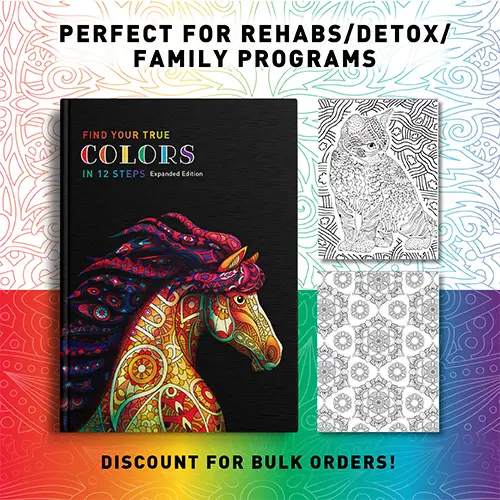Opioid Addiction Is Treatable: Here’s What To Know
The toll that opioid addiction is taking on millions of people impossible to ignore. Opioids are everywhere. It’s easy to get swept away by them, and difficult to get free. Freedom from opioid addiction is not easy.This is because those who depend on opioids often experience uncomfortable and unpleasant withdrawal symptoms, the moment they stop using them.
What is Opioid Addiction
Opioid addiction is a a disease of chronic brain reward disorder and a severe medical condition. Although it can cause long-term brain function damage, early treatment can enable you to avoid some of the long-term health issues that are related to opioid addiction.
Recovery is a long process, but the appropriate medications, coupled with counseling, can improve your chances for long term recovery success. Hence, learn about opioid withdrawal and the ways by which you can cope with its withdrawal symptoms.
What are Opioids
Opioids are a class of drugs that include illegal substances, such as heroin, and prescription painkillers, like oxycodone. Doctors often prescribe opioids to cure chronic pain. However, when used according to prescription, prolonged use of opioids can result in dependence, which means that people can develop unpleasant withdrawal signs and symptoms once they refrain from using them.
What Causes Opioid Addiction
People who use of illicit opioids or abuse their prescription are at risk for addiction. People who use drugs in ways not originally intended, like the using another person’s prescription, or using larger quantities of the drug than prescribed. This class of people has a higher risk of having an opioid use disorder, which is defined by non-stop opioid usage, irrespective of its negative consequences to the person’s life.
How Does Opioid Addiction Affect the Brain
The moment a person takes an opioid, it tends to start having various effects on the individual, such as slowed breathing, drowsiness, and relaxation. Meanwhile, a lot of people start to experience a rush of pleasure, also known as euphoria, which they find highly rewarding.
Opioids bind to certain receptors in the brain and affect the pain signals transferred between the body and the brain, thereby dulling the perception of painful stimuli. Opioids also improve dopamine activity, which is a brain-signaling molecule that has a crucial role in reward and reinforcing behaviors. The release of this dopamine is related to giving pleasure, resulting in repeated usage of drugs.
Furthermore, dopamine helps to reinforce pleasurable events, like exercising, engaging in an exciting hobby, and whiling away time with friends, family, and loved ones. Therefore, in a sense, the moment dopamine is released due to an opioid, the drug “informs” the brain to continue acting in the same way, which is a factor that contributes to what makes opioids addictive.
Opioid Addiction Treatment
Compared to stopping strong alcohol or the use of sedatives, based on health conditions, the act of stopping opioid medicines is not exactly risky. Yet, it is often intelligent to obtain guidance about detoxification from your physician.
This is particularly so if you have an underlying status like a cardiovascular disease which is worsened by the withdrawal symptoms, or if you are pregnant. In that case, detoxing or cutting back can lead to miscarriage. If you are pregnant, it is advisable to consult your doctor before you try to detoxify or cut back.
There are several methods to select from when attempting to cut back your usage of drugs. Some people recover on their own (without treatment), while others gain from a formal treatment program that includes drugs to help ease withdrawal symptoms and cravings. The following are strategies that can help you reduce your opioid usage:
List Your Reasons For Needing Opioid Addiction Treatment
Making a list of the reasons you wish to curtail your use of drugs can get you encouraged. Some of the reasons could include improving your relationships, sleeping more, or feeling healthier.
Keep a Diary of Your Drug Usage
For about three to four weeks, you can keep track of the periods you use an opioid. You can add details about what and how much you used, including where you were. Before then, you must have come up with your desired goal regarding curtailment.
Compare your usage frequency with your goal, and if you seem to be having trouble sticking to your goal, you can contact your health professional for help. However, note that keeping psychoactive drugs away from your home can also help you meet your goal.
Additionally, you can choose drug-free days, watch out for peer pressure, frequently keep yourself busy, and you should be persistent as much as you can.
Manage Withdrawal Symptoms
Opioids are notorious for creating withdrawal symptoms, as it is the response of your body to stopping the usage of a substance on which your body is already depending. The withdrawal symptoms of opioids include:
- Muscle and bone pain
- Vomiting
- Insomnia
- Restlessness
- Involuntary leg movements
- Diarrhea
These symptoms often subside within one week. However, some people continue to face sleep problems and irritability for several months.
Consider FDA-Approved Medications for Treating Opioid Addiction
Methadone (Methadose, Dolophine)
This is a long-acting opioid that affects similar parts of your brain as the medication you are having a problem with. However, it will not get you high. This means you can choose to take it daily, but you can only get it at special clinics. The appropriate dosage can help to prevent withdrawal symptoms and reduce your drug cravings.
Buprenorphine
This is another FDA-approved medication for the treatment of opioid addiction. It reaches the same receptors in your brain, but not as strong. It has reduced the risk of lethal overdose, which makes experts favor it. You can also find it in combination with naloxone. It is available in various forms, such as:
- Tablet (Suboxone, Zubsolv)
- Film positioned in your mouth against your cheek (Belbuca)
- Shot (Buprenex, Sublocade)
- Implant that goes under the skin and lasts for about six months (Probuphine)
- Skin patch (Butrans)
Naltrexone
This blocks opiate receptors. Compared to buprenorphine or methadone, it does not take away cravings or withdrawal symptoms. Nevertheless, you can not get high if you use drugs while taking it.
Naltrexone works best as part of a wide recovery treatment program.
Freedom from Opioid Addiction
If you or your loved one are grappling with addiction to opioids, you do not need to fight the battle on your own, as you can seek medical care and attention so as to facilitate your escape. Moreover, when you schedule addiction treatment, your freedom tends to come faster than expected.
More Articles To Read About Treatment And Recovery
What Are The Signs Of Opioid Abuse
Is Medically Assisted Treatment Right For You
How Isolations Fuels Opioid Addiction
Natural Pain Relief For Those Who Hate Pills
How These 5 Steps Make Change In Recovery





















